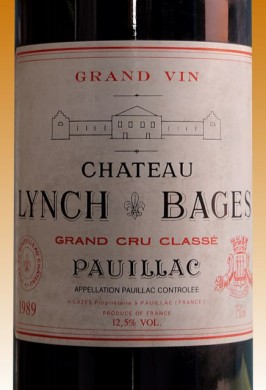How to Read a Wine Label

How to Read a Wine Label
Every look at a French wine label and wonder what it takes to read a wine label? Let’s see what it takes to understand the basic terms on how to read a wine label. It’s easier than you think!
There are 7 basic components on how to read a wine label for a French Wine:
- Name of the chateau
- Name of the producer
- Vintage year
- Alcoholic content
- Where the grapes where grown, or appellation-name of the region
- Classifications
- Where wine was bottled
The alcoholic content is also given on the wine label. Usually, 12-13 percent is noted, although it can go to a maximum of 14 percent. Richness in wine does not equate with high alcoholic content, by the way. I have tasted wines with 11.5 or 12 percent alcohol that were fine beverages, rich and flavorful. I have also tasted wines at the 14% level that struck me as blowsy and not of high quality. So, increased alcohol in wine is not necessarily a plus. Some winemakers purposely strive to manipulate an artificially high alcohol level in order to promote sales. Their wines are overblown and blowsy.
Of importance is the area where the grapes were grown, variously referred to as the appellation, often rendered as appellation controlée or AOC. The name of the region will be given here, and that is a matter strictly regulated by French law. These area designations are trustworthy, with one caveat to the careful wine purchaser. Expansion of the delimited region, as has happened in Chablis to take advantage of a popular wine, does occasionally take place. It is as bad an idea as overproduction of grapes, which also weakens the product.
Beginning with the famous Classifications of 1855 of the Médoc and the Sauternes regions, are well known. These classifications will be noted on the wine label, as a further guarantee of quality. If you are spending good money for a bottle of Château Gruaud Larose, a superb St. Julien from the Médoc, the label will prominently proclaim that this wine is part of the 1855 Classification. My treasured bottle of Château Suduiraut 1975, an excellent Sauternes, similarly notes on the label Premier Grand Cru Classé en 1855.
Wine labels will often carry the designation Grand vin by itself, without reference to a classification. What this seems to mean is that the wine is the top wine produced at the property. Otherwise, the term used will be Grand cru, as with my bottle of Château Suduiraut. Wines could, of course, also bear the designation Premier cru, a Burgundy designation. A nice bottle of Chablis Premier cru from 2008, for example, let’s say a William Fèvre Montmains, would be a treat at $38. Now of course, a good wine from the Médoc region could also carry the earned designation cru bourgeois or cru artisan if that were appropriate.
Now let’s look at some of the finer points on how to read a wine label
- A wine bottled at the estate will be mis en bouteille au château (or à la propriété).
- Wines from Burgundy sometimes bear the helpful designation vieilles vignes (old vines), which may have started out as indicating that the vines survived the phyloxera plant disease in the nineteenth century. Now, they mean that the vines are at least thirty years old, as a general rule. Such wines are thought to have more ripeness in their flavor, and my experience is that that is generally true.
- With Champagnes, of course, you have choice of extra dry or brut. The extra dry isn’t dry at all, for most American tastes, including mine. I tend to prefer the more dry brut champagnes.
- On the back wine label, of course, comes the grim warning information that our law requires. Sometimes, to lighten the mood, the producer will include some interesting information about the vineyard, but that is not legally required. I would like to see more specific information regarding blends of grapes, but this information is usually jealously guarded by French wine producers. Still, it would add to our knowledge of the wines we enjoy!
Receive timely updates and promotions and a free Guide to Wine Tasting Like a Pro-Click Here!

